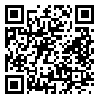Volume 25, Issue 97 (7-2025)
refahj 2025, 25(97): 199-225 |
Back to browse issues page
Download citation:
BibTeX | RIS | EndNote | Medlars | ProCite | Reference Manager | RefWorks
Send citation to:



BibTeX | RIS | EndNote | Medlars | ProCite | Reference Manager | RefWorks
Send citation to:
Mohammadi nesheli Y, saadat R, kashiyan A. (2025). Unequal Exchange Rate Pass-Through across urban and rural income groups in Iran. refahj. 25(97), : 7 doi:10.32598/refahj.25.97.4507.1
URL: http://refahj.uswr.ac.ir/article-1-4317-en.html
URL: http://refahj.uswr.ac.ir/article-1-4317-en.html
Abstract: (553 Views)
Introduction: Social welfare is fundamentally tied to household consumption patterns and income levels, where enhanced consumption conditions can elevate overall societal well-being. This study investigates how exchange rate fluctuations differentially affect: (1) price levels of goods and services consumed by various income groups, and (2) average income across deciles in both urban and rural regions of Iran, analyzing both the direction and magnitude of these impacts.
Method: Using a simple linear model and the structural vector autoregression (SVAR) technique, this study analyzes the variance in consumer goods and services costs and average income of income groups. The impact of exchange rate shocks (IRF) is evaluated using annual data from 1363 to 1401 (1984–2022), with a one-period lag considered.
Findings: The Johansen cointegration test confirms a statistically significant long-run equilibrium relationship at the 5% significance level. The empirical results demonstrate that a 1% increase in the exchange rate leads to a 0.72% decline in social welfare. During the observation period, exchange rate volatility exerted its most pronounced impact on expenditure categories for education, healthcare, and communication services across both urban and rural regions.
Discussion: Rising exchange rates and declining national currency value impose substantial cost burdens on households, threatening essential expenses like education and health. Exchange rate impacts on communication costs are also significant, necessitating greater attention from policymakers.
Method: Using a simple linear model and the structural vector autoregression (SVAR) technique, this study analyzes the variance in consumer goods and services costs and average income of income groups. The impact of exchange rate shocks (IRF) is evaluated using annual data from 1363 to 1401 (1984–2022), with a one-period lag considered.
Findings: The Johansen cointegration test confirms a statistically significant long-run equilibrium relationship at the 5% significance level. The empirical results demonstrate that a 1% increase in the exchange rate leads to a 0.72% decline in social welfare. During the observation period, exchange rate volatility exerted its most pronounced impact on expenditure categories for education, healthcare, and communication services across both urban and rural regions.
Discussion: Rising exchange rates and declining national currency value impose substantial cost burdens on households, threatening essential expenses like education and health. Exchange rate impacts on communication costs are also significant, necessitating greater attention from policymakers.
Article number: 7
Keywords: exchange rate transition, price of goods and services, income groups, structural VAR model
Type of Study: orginal |
Received: 2024/03/3 | Accepted: 2024/11/20 | Published: 2025/07/6
Received: 2024/03/3 | Accepted: 2024/11/20 | Published: 2025/07/6
Send email to the article author
| Rights and permissions | |
 |
This work is licensed under a Creative Commons Attribution-NonCommercial 4.0 International License. |








